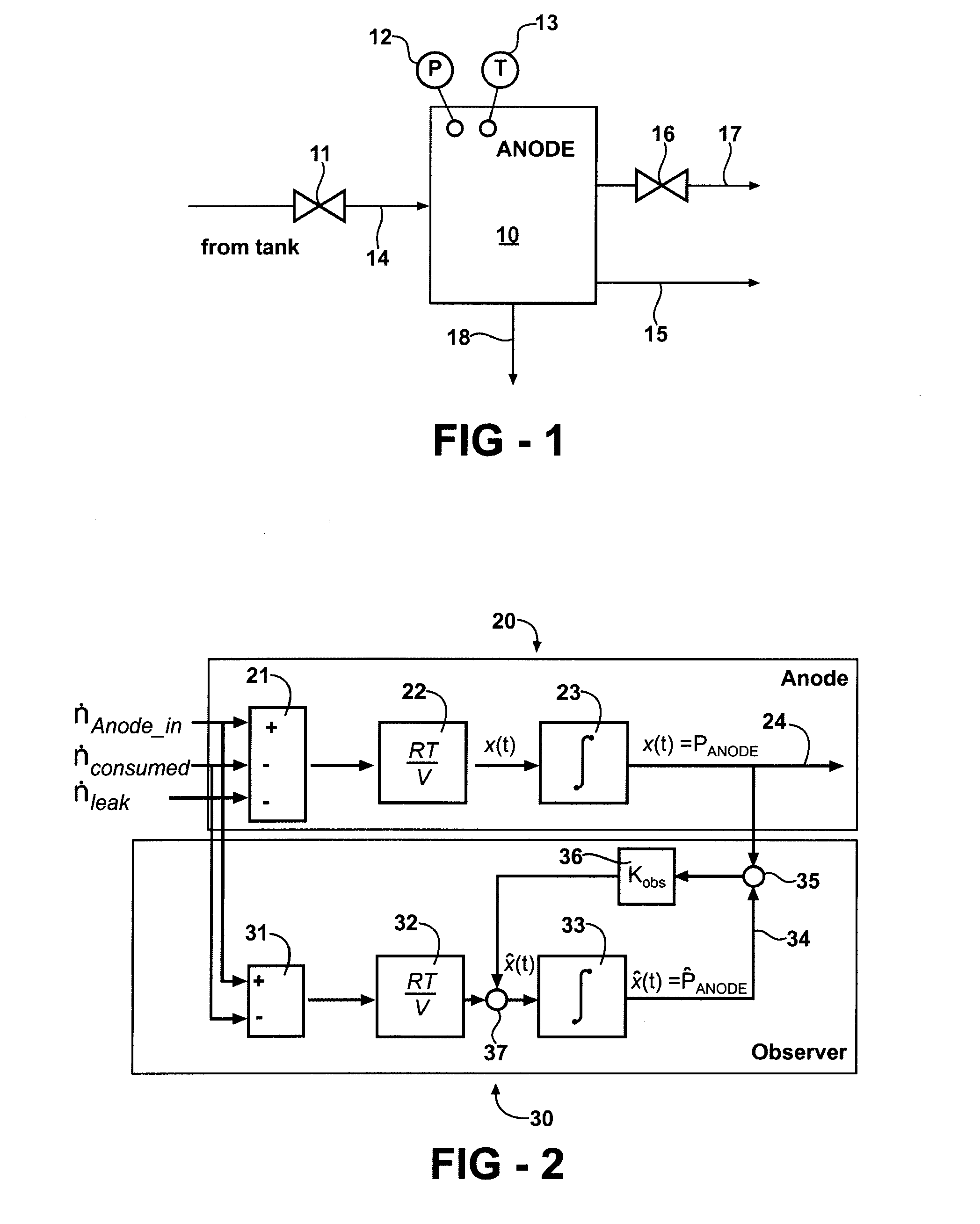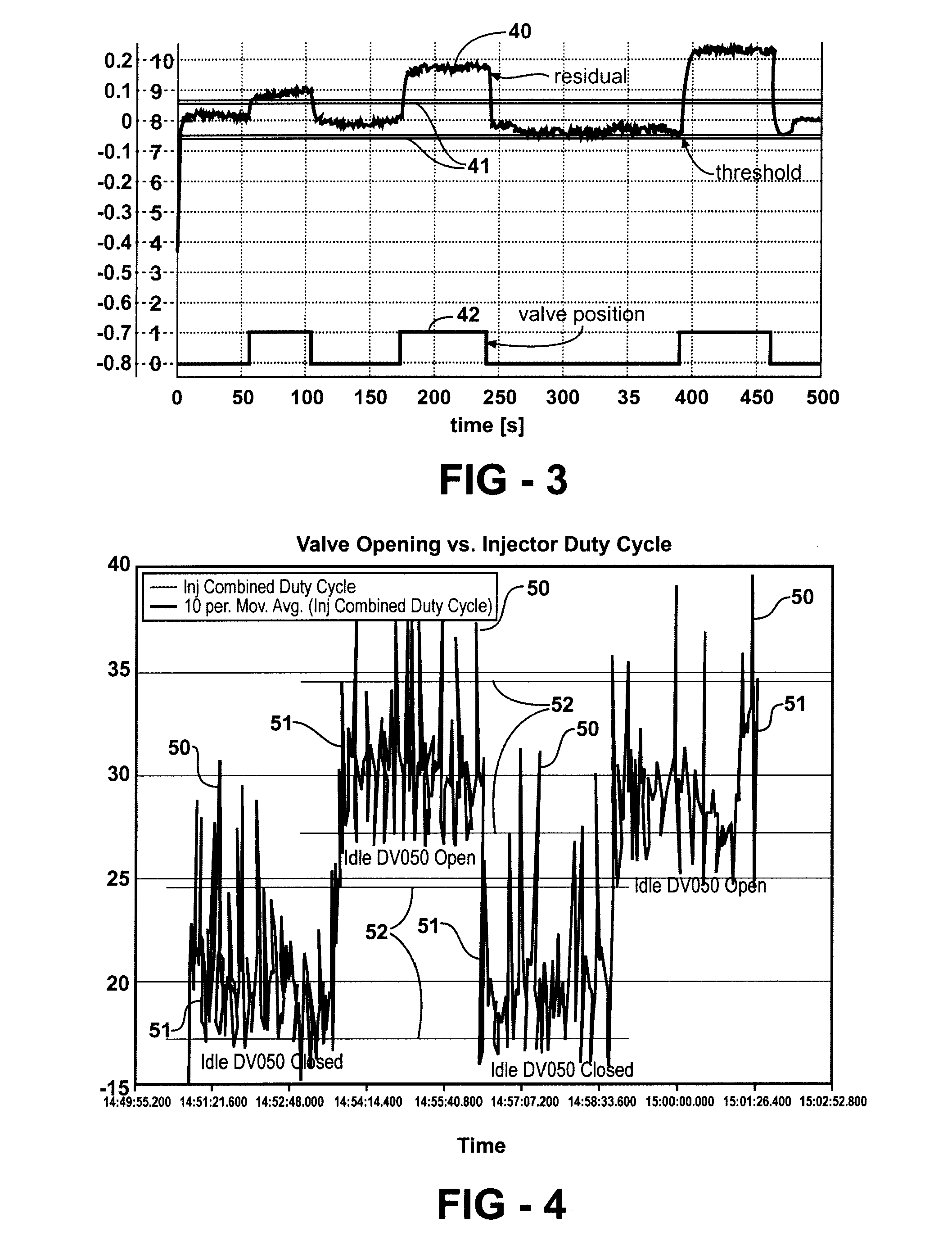Leak detection in a fuel cell system
a fuel cell and leak detection technology, applied in the direction of fluid tightness measurement, instruments, electrochemical generators, etc., can solve problems such as showing the presence of leaks
- Summary
- Abstract
- Description
- Claims
- Application Information
AI Technical Summary
Benefits of technology
Problems solved by technology
Method used
Image
Examples
Embodiment Construction
[0015]The following detailed description and appended drawings describe and illustrate various exemplary embodiments of the invention. The description and drawings serve to enable one skilled in the art to make and use the invention, and are not intended to limit the scope of the invention in any manner. In respect of the methods disclosed, the steps presented are exemplary in nature, and thus, the order of the steps is not necessary or critical.
[0016]FIG. 1 is a schematic representation of a fuel cell anode 10 with an input and outputs. An input 14 is connected to a source (tank) of hydrogen through an input valve or injector 11. The outputs include an anode pressure signal 12 and an anode temperature signal 13. The rate of hydrogen moles converted in the fuel cell stack (output 18) is proportional to the stack current. Under stable conditions, the conversion rate is equal to the input rate plus a small amount of hydrogen crossover to the cathode. During stack operation, nitrogen a...
PUM
 Login to View More
Login to View More Abstract
Description
Claims
Application Information
 Login to View More
Login to View More - R&D
- Intellectual Property
- Life Sciences
- Materials
- Tech Scout
- Unparalleled Data Quality
- Higher Quality Content
- 60% Fewer Hallucinations
Browse by: Latest US Patents, China's latest patents, Technical Efficacy Thesaurus, Application Domain, Technology Topic, Popular Technical Reports.
© 2025 PatSnap. All rights reserved.Legal|Privacy policy|Modern Slavery Act Transparency Statement|Sitemap|About US| Contact US: help@patsnap.com



